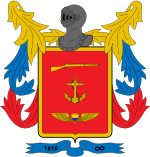Colombian Naval Infantry
The Colombian Naval Infantry[3] and also referred to as Colombian Marines (Spanish: Infantería de Marina Colombiana) is the marine force of the Colombian National Armada. The 24,000-member[4] Colombian Marine Infantry is organized into a single division with four brigades (one amphibious assault brigade and three riverine brigades), each with several battalions plus numerous small security units.
| Colombian Naval Infantry | |
|---|---|
| Infanteria de Marina de Colombia | |
 Coat of Arms of the Colombian Naval Infantry | |
| Founded | September 17, 1810 - Foundation of Colombian Armada, March 8, 1940 First official battalions. |
| Country | |
| Branch | |
| Type | Amphibious unit |
| Role | Naval infantry |
| Size | 24.000[1] (2009) |
| Garrison/HQ | Colombian Ministry of Defense, Coveñas & Cartagena |
| Motto(s) | Voluntas Omnia Superat - Willpower overcomes everything |
| Colors | Scarlet & Blue |
| Anniversaries | January 10[2] |
| Engagements | Battle of Lake Maracaibo, Thousand Days War (Civil war), War Against Peru, Korean War, Colombian Armed Conflict |
| Commanders | |
| Current commander | Major General Luis Gomez Vazquez |
| Notable commanders | José Prudencio Padilla |
| Insignia | |
| Flag | 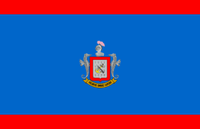 |
History
The Naval Infantry is a constituent part of the Navy whose origins date back to the wars of independence. Today's Colombian Marines trace their heritage and military traditions from the Gran Colombia Marine Corps raised in 1822, by orders of Major General Francisco de Paula Santander, with Captain Diego Antonio García, who was appointed commander of the 6th Marine Company raised that year, being appointed Commandant that October.
Raised by an order from President Dr. Alfonso López Pumarejo on January 12, 1937, The Colombian Marines started out as a 120-strong Marine Company, located on Naval Base Cartagena.
On March 8, 1940, the 1st Marine Battalion was raised, with three companies to cover Bolivar, Putumayo and the San Andres Islands, then in 1943 was assigned to Buenaventura, Barranquilla, Puerto Leguizamo and the eastern plains.
In 1944, a heavy weapons company was raised and the battalion was moved to facilities adjacent to the San Pedro Claver convent in Cartagena. With the advent of La Violencia, in 1952 the Marines were reassigned to the Eastern Naval Force due to the appearance of subversives in this area, and in a year, with the transfer of personnel from the National Army of Colombia, the number of personnel serving increased.
In July 1955, thanks to the instruction of officers and NCOs in the United States in the United States Naval Academy, The Basic School of the United States Marine Corps and the United States Marine Corps School of Infantry and the U.S. mission of the United States Marine Corps aimed for this effort, the Naval Infantry began training and forming its personnel for amphibious warfare operations.
On April 9, 1956, the Marine Corps Basic and Formation School was opened, headquartered at first in Turbaco (Bolivar), then moved to Carne (Cartagena) and is today currently located in Covenas.
By 1957, the Marine Fluvial Commands were officially raised with the first unit being called "Flotilla Avispa", and thus its formal foundation marked a new chapter in the Naval Infantry history, as the Fluvial Commands were mandated to secure the nation's inland waters.
On July 3, 1958, the Colombian Naval Academy had its first 8 Marine Second Lieutenants commissioned.
In 1964, the Marine Infantry Directoriate of the Navy was established and became the Naval Infantry Command in 1967, the very same year that, led by CPT Jaime Arias Arango and with the advice of the then Commandant, COL Jorge Sánchez, the Marine Amphibious Commando specialty arm was officially introduced into the service.
Dates of importance to the Naval Infantry
The Naval Infantry Training Base, based in Covenas, began its work in 1975, with its mission of training men and women to join the ranks of the Naval Infantry and to prepare to perform its duties of defending the territorial and maritime integrity of the Colombian nation through basic military training through its Instruction Battalions before moving to the regular units of the Naval Infantry nationwide.
The Marines arrived at the Operational Unit Mayor, on January 15, 1984, the presence of the Marines, is in the jurisdiction of the Navy land, archipelagos, islands, coastal and river arteries. Its slogan is “LA VOLUNTAD TODO LO SUPERA” "WILL SURPASSES EVERYTHING"
Since then, the Marines have had several changes in line with the operational situation and public order in Colombia.
Personnel
The Colombian Marine Infantry fields approximately 22,000 personnel, among officers and Infantrymen, and it is by far the biggest Corps within the Navy.[4]
Ranks & Insignias
The tables below display the rank structures and rank insignias for the Colombian Marine Infantry personnel.[5]
| Ranks and Insignias - Colombian Marine Infantry | ||||||||||||
|---|---|---|---|---|---|---|---|---|---|---|---|---|
Officers | ||||||||||||
| NATO code[n 1] | OF-10 | OF-9 | OF-8 | OF-7 | OF-6 | OF-5 | OF-4 | OF-3 | OF-2 | OF-1 | ||
| No equivalent |  |
 |
 |
 |
 |
 |
 |
 |
 |
 | ||
| Spanish | - | General | Teniente General | Mayor General | Brigadier | Coronel | Teniente Coronel | Mayor | Capitán | Teniente | Subteniente | |
| Abbr. | - | GR | TG | MG | BG | CR | TC | MY | CT | TE | ST | |
| English | - | General | Lieutenant General | Major General | Brigadier | Colonel | Lieutenant Colonel | Major | Captain | Lieutenant | Sublieutenant | |
Non-Commissioned Officers and Infantrymen | ||||||||||||
| NATO code[n 1] | OR-9 | OR-8 | OR-7 | OR-6 | OR-5 | OR-4 | OR-3 | OR-2 | OR-1 | |||
 |
 |
 |
 |
 |
 |
 |
 |
 |
No Insignia | |||
| Spanish | Sargento Mayor de Comando Conjunto | Sargento Mayor de Comando | Sargento Mayor | Sargento Primero | Sargento Vice Primero | Sargento Segundo | Cabo Primero | Cabo Segundo | Cabo Tercero | Infante Regular | ||
| Abbr. | SMCCCIM | SMCCIM | SMCIM | SPCIM | SVCIM | SSCIM | CPCIM | CSCIM | C3CIM | - | ||
| English | Joint Command Sergeant Major | Command Sergeant Major | Sergeant Major | First Sergeant | Sergeant First Class | Second Sergeant | First Corporal | Second Corporal | Lance Corporal | Private, Marine | ||
Organization[6]
Marine Infantry Training Base

Base de entrenamiento de infanteria de marina "BEIM". Is located in a small town called Coveñas, Sucre Department, in the caribbean north of Colombia. It has 3 battalions for recruits' boot camp training called BINIM 1, BINIM2 and BINIM3 (BINIM, Batallón de Instrucción de Infantería de Marina). A 13-week training program is performed under supervision of the United States Naval Mission by a Gunnery Sergeant of the United States Marine Corps.
The BEIM also has an Specialists Center (CIEAN: Centro Internacional de Entrenamiento Anfibio, where professional marines and sub-officers (Coporals - Sergeants) receive special training courses: Drill instructor, Anti-explosives, Canine guide, Personal defense, Shooter and Water survival. The training in this center is also supervised by the Gunnery Sergeant of the US Naval Mission.
There is also the Batallón de Comando y Apoyo de IM Nº 6 (BACAIM6) in charge of the watch and security of the surrounding areas of the base and some sectors of the Sucre Department.
First Marine Infantry Brigade
- Brigada de Infantería de Marina No.1
Is a minor operative unit with the main purpose of neutralizing narcoterrorism. Mainly operated in the Caribbean Region of Colombia, in the area of Montes de María.
- BATALLÓN DE FUSILEROS DE IM N° 2
- BATALLÓN DE FUSILEROS DE IM N° 3
- BATALLÓN DE FUSILEROS DE IM N° 4
- BATALLÓN DE CONTRAGUERRILLAS DE IM N° 1
- BATALLÓN DE CONTRAGUERRILLAS DE IM N° 2
- BATALLÓN DE COMANDO Y APOYO DE IM N° 1
First Riverine Marine Infantry Brigade
- Brigada Fluvial de Infantería de Marina No. 1
The First Fluvial Brigade of the Naval Infantry was founded with the main purpose of grouping the direction, organization and control of all fluvial units of the former Fluvial Fleet of Magdalena and the Oriente.
- BATALLÓN FLUVIAL DE I.M. NO.20 TURBO – ANTIOQUIA
- BATALLÓN FLUVIAL DE I.M. NO.30 YATI – BOLIVAR
- BATALLÓN FLUVIAL DE I.M. NO.40 PUERTO CARREÑO - VICHADA
- BATALLÓN FLUVIAL DE I.M. NO.50 PUERTO INIRIDA – GUAINIA
Second Riverine Marine Infantry Brigade
- Brigada Fluvial de Infantería de Marina No.2
The Second Fluvial Brigade of the Naval Infantry is based in Buenaventura, Valle del Cauca Department.
- BATALLÓN DE ASALTO FLUVIAL DE IM N° 1 BUENAVENTURA-VALLE
- BATALLÓN DE ASALTO FLUVIAL DE IM N° 3 BAHIA SOLANO - CHOCO
- BATALLÓN DE ASALTO FLUVIAL DE IM N° 4 BAHIA MALAGA – VALLE
- BATALLÓN FLUVIAL DE IM N° 10 GUAPI - CAUCA
- BATALLÓN FLUVIAL DE IM N° 70 TUMACO – NARIÑO
- BATALLÓN FLUVIAL DE IM N° 80 BUENAVENTURA-VALLE
- BATALLÓN DE COMANDO Y APOYO DE IM N° 3 BUENAVENTURA-VALLE
Third Riverine Marine Infantry Brigade
- Brigada Fluvial de Infantería de Marina No.3
The Third Fluvial Brigade of the Naval Infantry is based in Puerto Leguizamo, Putumayo Department.
- Batallón Fluvial de I.M. Nº 60 Puerto Leguízamo - Putumayo
- Batallón Fluvial de I.M. Nº 90 Tres Esquinas - Caquetá
- Batallón Fluvial de I.M. Nº 100 Barrancón - Guaviare
- Batallón de Asalto Fluvial I.M. Nº 2 Tres Esquinas - Caquetá
Riverine Task Group
- Grupo de Tarea Fluvial
The Fluvial Tasks Group is a minor operative unit created on February 16, 2004 to participate in the Joint Task Force OMEGA which participates in operations part of the Plan Patriota.
- UNIDAD DE TAREA FLUVIAL DEL CAQUETA. TRES ESQUINAS – CAQUETA
- UNIDAD DE TAREA FLUVIAL DEL GUAVIARE. SAN JOSE DEL GUAVIARE
- BATALLÓN DE ASALTO FLUVIAL DE IM N° 2. TRES ESQUINAS – CAQUETA
Equipment
APCs
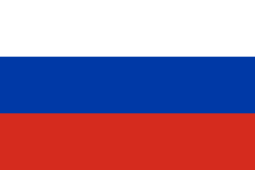
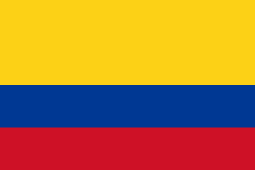
Hovercraft
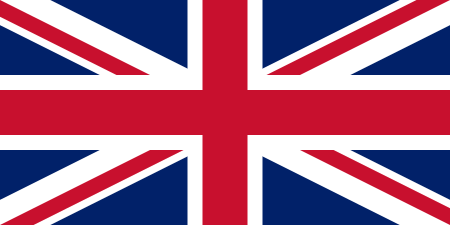
Trucks
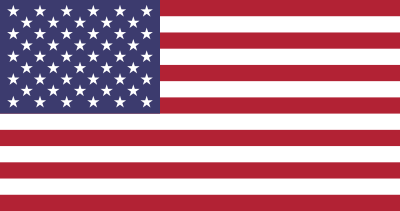
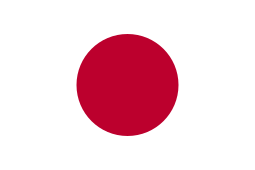



Notes
- Colombia is not a member of NATO, so there is not an official equivalence between the Colombian military ranks and those defined by NATO. The displayed parallel is approximate and for illustration purposes only.
References
- LOGROS DE LA POLÍTICA DE CONSOLIDACIÓN DE LA SEGURIDAD DEMOCRÁTICA – PCSD Junio de 2009 Archived 2009-09-21 at the Wayback Machine, página 81
- WebInfomil. "Infanteria de Marina conmemora 77 años de servicio en Colombia". Retrieved 16 December 2014.
- "CIA - The World Factbook -- Field Listing :: Military branches". Retrieved 16 December 2014.
- Ministerio de Defensa Nacional, Colombia (1 November 2010). "Logros de la Política de Consolidación de la Seguridad Democrática, 2010" (PDF) (in Spanish). Archived from the original (PDF) on 2012-08-03. Retrieved 23 April 2011.
- Congreso de la República de Colombia (28 July 2010). "Ley 1405 de 2010 Nuevos Grados Militares" (in Spanish). Archived from the original on 2011-07-24. Retrieved 26 April 2011.
- Brigades of the Colombian Naval Infantry (in Spanish)
- WebInfomil. "Armada Nacional recibe sus primeros Hovercraft Griffon 2000TD". Retrieved 16 December 2014.
- Colombia; Marines receive Navistar 7000MV trucks Archived 2014-10-20 at the Wayback Machine - Dmilt.com, May 1, 2013
External links
| Wikimedia Commons has media related to Colombian Naval Infantry. |
- (in Spanish) Colombian Marines official site
- (in Spanish) Colombian National Armada
- (in Spanish) Colombia: Seguridad & Defensa
- (in Spanish) Non official Military Forces Web Site (Colombia)
